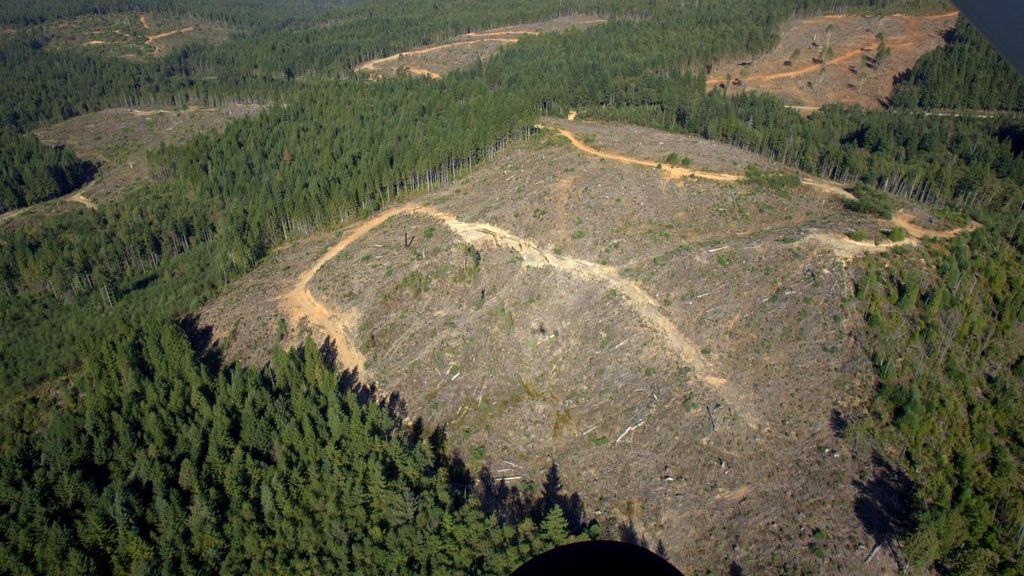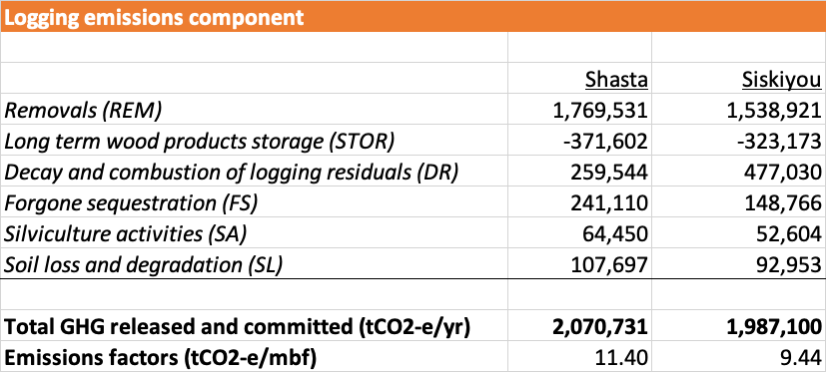A Gaping Hole in California’s Climate Action Framework: Big Timber
August 29, 2024
Logging is a major source of GHG emissions in Shasta, Siskiyou, and other California counties but is ignored in the state's climate action agenda

Center for Sustainable Economy has teamed up with Battle Creek Alliance to produce one of the first life-cycle based greenhouse gas emissions (GHG) estimates for industrial logging practices in northern California. While California routinely boasts about its leadership on climate, GHG emissions associated with clearcutting and logging road construction is entirely overlooked and represents a major gap in the climate agenda for heavily logged regions of the state.
The report replicates a peer reviewed methodology first published in the journal Environment, Development, and Sustainability and in an analysis of the climate impacts associated with logging, grazing, and road construction in the Nez Perce – Clearwater National Forest published last year. Both reports received financing and technical support from the Forest Carbon Coalition. The new report estimates GHG emissions associated with logging and logging road construction in Siskiyou and Shasta counties and also describes the many ways industrial-scale logging for wood products and to clear the way for development is making the land more susceptible to climate change. Key findings include:
- Despite its stated intention to achieve carbon neutrality by 2045 and growing support for climate restoration the State of California does not report or regulate greenhouse gas (GHG) emissions from industrial logging activities. This is because logging-related emissions are simply assumed to be climate neutral – offset by forest growth elsewhere or in the future or by substitution of wood products for more carbon intensive goods.
- Both assumptions are inconsistent with science and climate policy. Compared to the natural forests they have replaced, landscapes dominated by clearcuts, logging roads and timber plantations store and sequester less and emit far more carbon. As such, GHG emissions associated with intensive logging activities play a key role in keeping GHG concentrations in the atmosphere far above pre-industrial levels.
- Compared with pre-industrial forests, emissions from logging are new to the landscape, forest growth has always been there and has, in fact, been greatly reduced by logging. Moreover, replanting is the law and not some voluntary action. Therefore, granting the logging and wood products industry an effective offset for forest growth elsewhere or in newly established plantations violates the additionality requirements in California and other states’ emissions trading programs, which require the timber industry to improve on nature’s carbon balance and go beyond mere compliance with existing laws to earn offsets.
- Counting CO2 captured by growth of trees eventually put on the chopping block also violates the criteria of permanence.
- And while wood products may be less carbon intensive than some substitutes, they are more carbon intensive than many others like bamboo, hemp, carbon negative concrete, wind and solar energy.
- The State of California and its counties have many methods and sources of information that can be relied upon to monitor and report the climate impacts of logging on an annual basis. To demonstrate, this report provides preliminary estimates of GHG emissions associated with logging and road building in Shasta and Siskiyou counties based on peer reviewed methodologies and also reviews ways these activities could make the land more vulnerable to climate change by increasing risks associated with wildfires, floods, heat waves and other climate stressors.
- Using a life-cycle carbon footprint method, this report estimates that GHG emissions associated with logging and logging roads in Shasta and Siskiyou counties averages over 4 million metric tons CO2 equivalent per year (4.06 MMT CO2-e/yr). This is equivalent to annual emissions from 883,000 gas-powered passenger vehicles. In Shasta County, the annual emissions estimate of 2.07 MMT CO2-e/yr exceeds those associated with building energy use, transportation, solid waste, water use and agriculture combined.
- Emissions factors found by this research (9.4 – 11.4 tCO2-e/mbf) fall squarely within the range reported in previous studies from both temperate and tropical forests worldwide. Applied to California timber harvests in total suggests that the logging and wood product sector is responsible for at least 16.8 MMT CO2-e per year.
- The results suggest that these activities are likely to generate between $487 million and $1.4 billion dollars in climate damages each year, an amount far more than any revenues generated by logging and wood products.

To view and download a copy of the report, click here.
To view the Battle Creek Alliance press release, click here.


